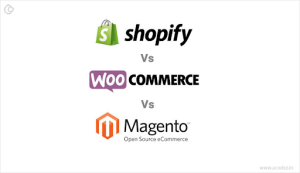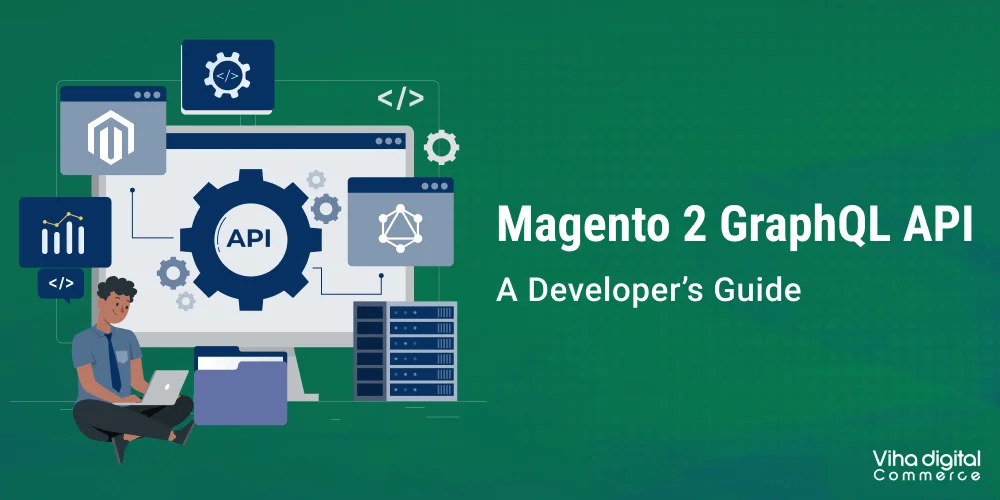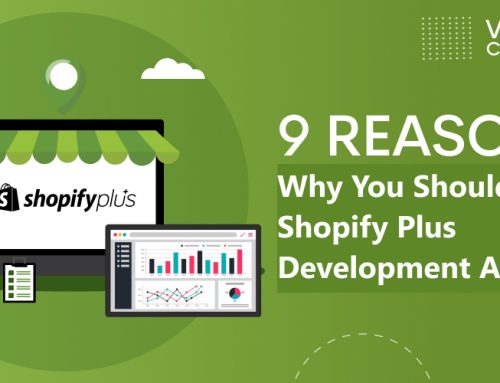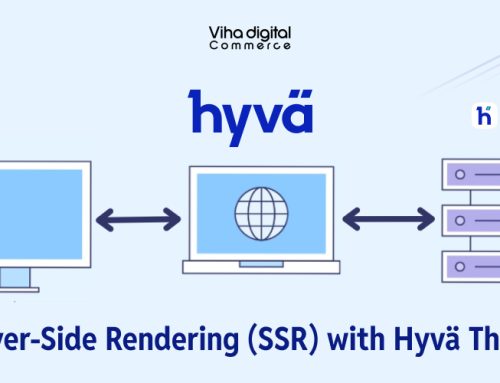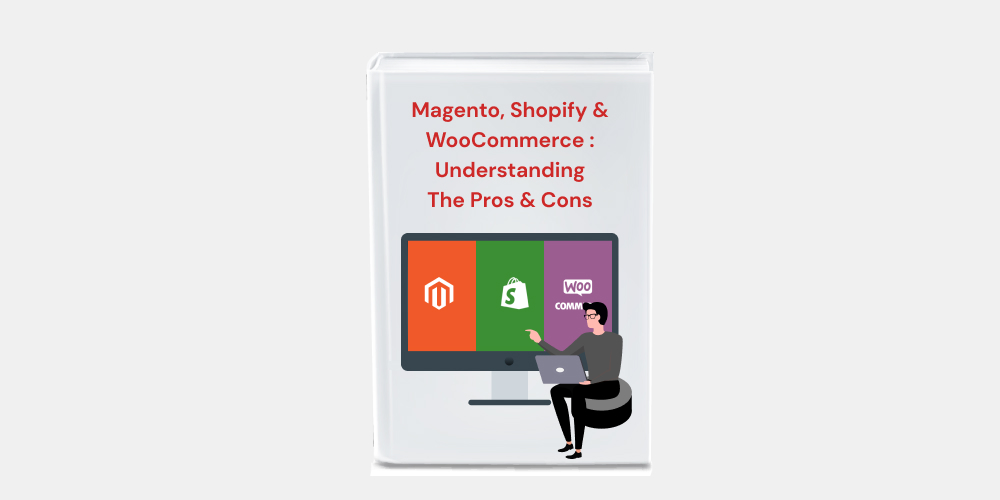
Shopify vs. WooCommerce vs. Magento: Understanding The Pros & Cons
Shopify vs WooCommerce vs Magento: Understanding the Pros & Cons
— Which E‑Commerce Platform Wins in 2025?
Choosing the best ecommerce platform in 2025 feels a lot like speed‑dating for your business: every option looks attractive until you ask the hard questions about budget, scalability, and long‑term compatibility.
This in‑depth ecommerce platform comparison of Shopify vs WooCommerce vs Magento (also searched as Shopify vs Magento vs WooCommerce) breaks down exactly what each system offers, where they shine, and where they stumble—so you can pick the perfect match and grow faster with Viha Digital Commerce at your side.
Definitions of Shopify vs. WooCommerce vs. Magento
Before diving into feature shoot‑outs, let’s clarify what each platform actually is.
What is Shopify?
Shopify is a fully hosted ecommerce solution—servers, security, and updates are all handled for you. It bundles storefront, payment gateway, and fulfilment tools under one subscription, plus 8 000+ apps in the Shopify App Store for quick feature boosts.
What is WooCommerce?
WooCommerce is an open‑source WordPress plugin that transforms a standard site into a store. Because it’s self‑hosted, you’re in charge of servers and maintenance, but you also gain the gigantic WordPress plugin ecosystem for marketing, SEO, and content.
What is Magento?
Magento (now Adobe Commerce) is a high‑powered open‑source platform aimed at brands that need deep customisation, multi‑store management, and enterprise‑grade scalability. You can self‑host Magento Open Source or run Adobe Commerce on the cloud, giving you full control over architecture, extensions, and headless ecommerce setups.
Features of Shopify vs. WooCommerce vs. Magento in Ecommerce Platforms
| Core Feature | Shopify | WooCommerce | Magento |
| Hosting model | Hosted (SaaS) | Self‑hosted (WordPress) | Self‑hosted / Adobe Cloud |
| Themes | 120+ paid/free Shopify themes | Thousands of WooCommerce themes | 100+ flexible Magento themes, fully custom |
| Add‑ons | Apps > 8 000 | Plugins > 60 000 | Magento extensions > 5 000 |
| Multi‑store | Only via Shopify Plus | WordPress Multisite workaround | Native multi‑store |
| Headless ready | Hydrogen / Storefront API | WP REST API + Gatsby | GraphQL / PWA Studio |
| PCI compliance | Handled by Shopify | Your responsibility | Your responsibility |
| B2B modules | Via apps or Shopify Plus | Plug‑ins | Adobe Commerce B2B suite |
Shopify vs. WooCommerce vs. Magento: Best Use Cases
| Scenario | Recommended Platform | Why |
| Solo founder launching in a week | Shopify | No servers, drag‑and‑drop builder, bundled payment gateway |
| Content‑heavy brand scaling SEO | WooCommerce with WordPress | WordPress blogging engine + flexible plugins |
| Multi‑store, multi‑currency enterprise | Magento | Robust native localisation, custom Magento development, granular roles |
| Rapid DTC dropshipping expansion | Shopify | Huge app ecosystem, integrated fulfilment networks |
| Scalable marketplace with unique workflows | Magento | Complex catalog rules, custom checkout, flexible API |
| Existing WP site wanting e‑commerce | WooCommerce | Seamless plugin install, shared theme |
Magento vs. WooCommerce vs. Shopify: Detailed Key Differences
- Hosted vs Self‑Hosted Ecommerce
- Shopify removes server headaches but limits backend control.
- WooCommerce and Magento let you pick infrastructure—great for performance tuning or compliance mandates.
- Customisation & Extensibility
- Magento customisation is near‑limitless via custom modules and custom Magento theme development.
- WooCommerce inherits WordPress’s plugin universe, but large stores may hit performance ceilings.
- Shopify allows extensive front‑end tweaks, yet true backend changes require apps or APIs.
- Scalability & Performance
- Shopify auto‑scales up to Shopify Plus, though database structure remains single‑store.
- Magento handles millions of SKUs and microservices architectures.
- WooCommerce scales well with caching/CDNs but can struggle past 100 000 SKUs without expert tuning.
- Developer Ecosystem
Viha Digital Commerce offers Shopify Web Development Services, custom Magento development services, and WordPress plugin development services so you can leverage certified engineers whichever path you choose.
Pros and Cons of Shopify vs. Magento vs. WooCommerce
| Platform | Pros | Cons |
| Shopify |
|
|
| WooCommerce |
|
|
| Magento |
|
|
Shopify vs. WooCommerce vs. Magento Pricing: Which Is More Cost‑Effective?
| Cost Layer | Shopify | WooCommerce | Magento |
| Platform licence | $39–$2 000+/mo | Free core | Free (Open Source) / POA (Adobe Commerce) |
| Hosting | Included | $20–$150+/mo | $40–$500+/mo |
| Payment fees | 0–2 % + gateway | Gateway fees only | Gateway fees only |
| Apps/Plugins | $0–$500/mo typical | $0–$300/mo typical | $0–$1 000/mo typical |
| Dev & maintenance | Low for basic stores | Moderate | Higher (ongoing dev ops) |
Take‑away: Shopify wins on predictable monthly pricing; WooCommerce is cheapest if you self‑manage hosting; Magento costs more upfront yet pays off when custom workflows or international stores deliver ROI.
SEO & Marketing: How Shopify, WooCommerce, and Magento Compare
- WooCommerce leverages WordPress’s blogging, custom taxonomies, and Yoast/RankMath plugins for granular on‑page SEO.
- Shopify offers clean URL structures, built‑in schema, and automated sitemaps, plus easy app integrations for email and SMS.
- Magento dominates technical SEO with full server‑side control, advanced metas, and lightning‑fast PWA capabilities—ideal for brands embracing headless ecommerce or custom front‑ends.
For omnichannel marketing, Viha Digital Commerce supplies Shopify migration services and Magento PWA builds that sync inventory, ads, and analytics across channels.
Security & Compliance: Keeping Your Store Safe
| Area | Shopify | WooCommerce | Magento |
| PCI Compliance | Level 1 certified; covered in fees | Merchant must configure | Merchant must configure |
| Updates & Patches | Auto‑applied | Manual via WP updates | Manual; Adobe issues regular patches |
| Backups | Automated by Shopify | Depends on host | Depends on host / cloud |
| Fraud tools | Shopify Fraud Protect & apps | Plugins like FraudLabs | Extensions & 3rd‑party suites |
With Viha Digital Commerce as your partner, you get proactive patching and 24/7 monitoring whether you’re on AWS for Magento, managed WP for WooCommerce, or Shopify Plus.
Final Verdict: Which Platform Is Right for You in 2025?
Pick Shopify if you value speed‑to‑launch, hassle‑free hosting, and a robust app marketplace.
Choose WooCommerce if content marketing rules your strategy and you want cost flexibility with WordPress familiarity.
Go Magento when custom workflows, multi‑store ambitions, or complex B2B requirements demand unlimited flexibility.
Still uncertain? Let Viha Digital Commerce run a personalized ecommerce platform comparison audit. We build, migrate, and scale stores on all three platforms through:
- Custom Magento development & theming
- Shopify web development and migration
- WordPress plugin and WooCommerce optimisation
Ready to future‑proof your store for 2025?
Contact Viha Digital Commerce today for a free strategy call and turn your platform choice into profit.
editor's pick
Harnessing the Power of Magento 2 GraphQL API: A Developer’s Guide
In the dynamic world of e-commerce, efficient and flexible [...]
Unlocking the Potential of Magento 2 B2B: A Comprehensive Guide
In the world of B2B e-commerce, having a robust, [...]
Viha Digital Commerce Gets Recognized as Clutch Global Leader for Spring 2024!
It is a privilege for Viha Digital Commerce to be named [...]
